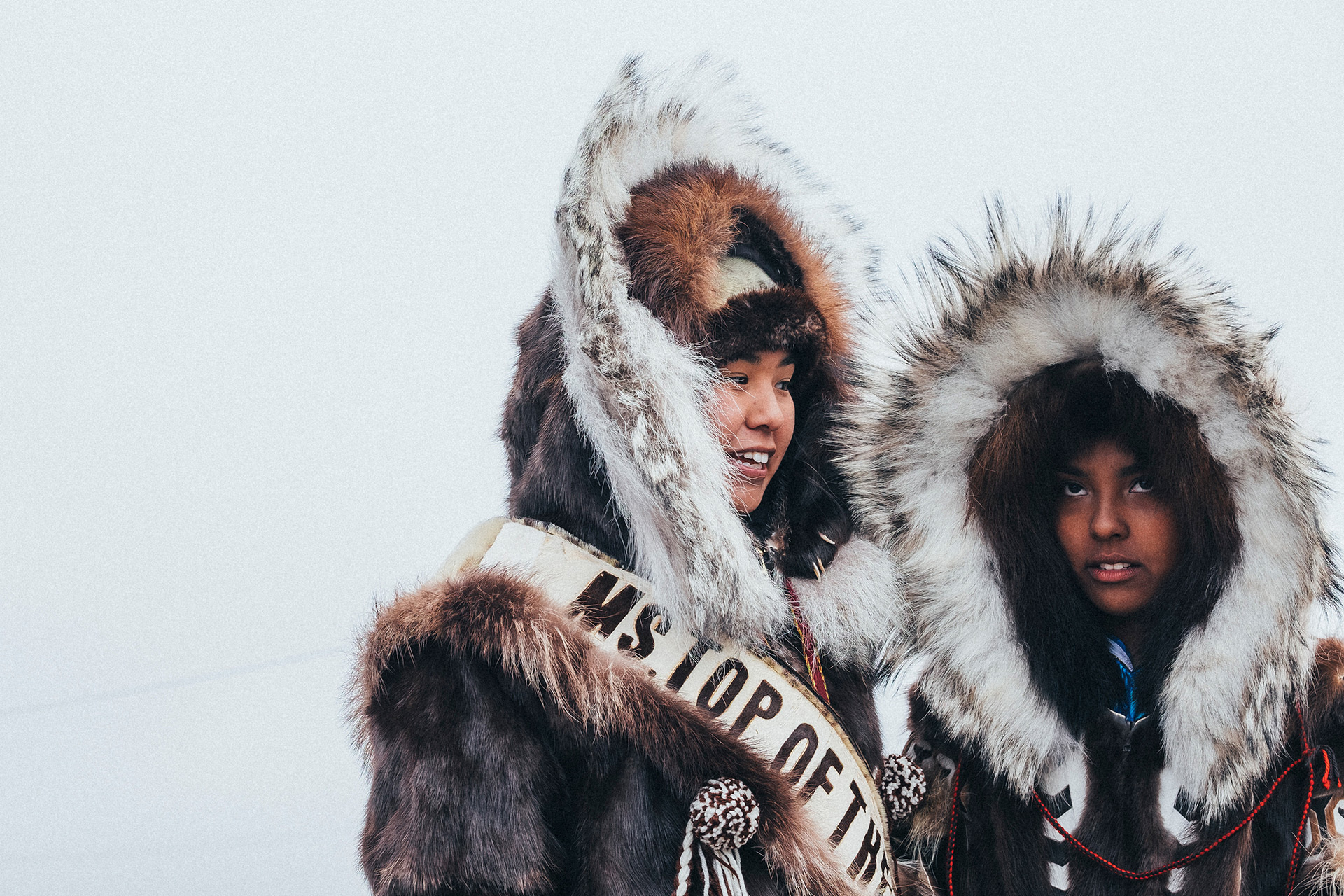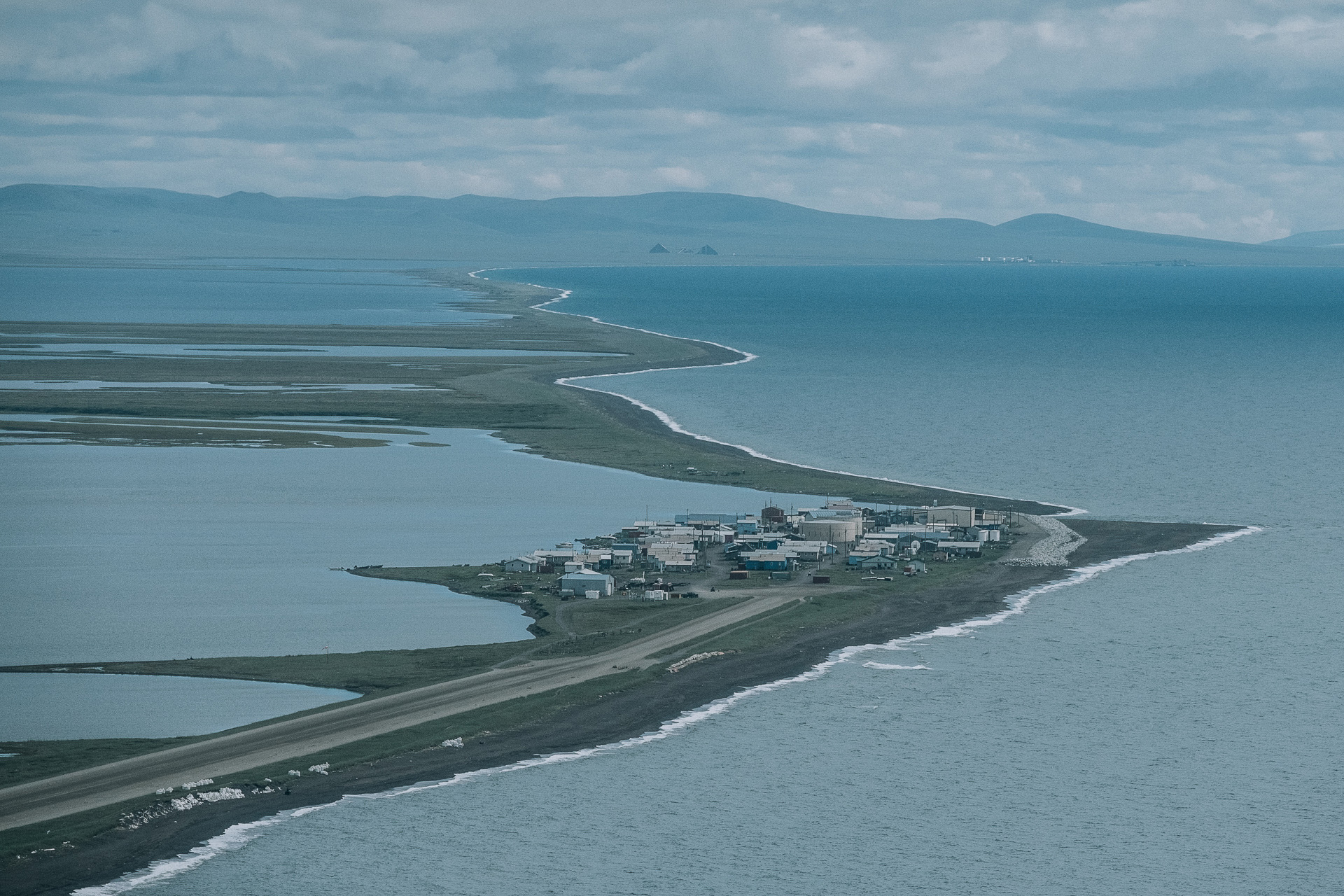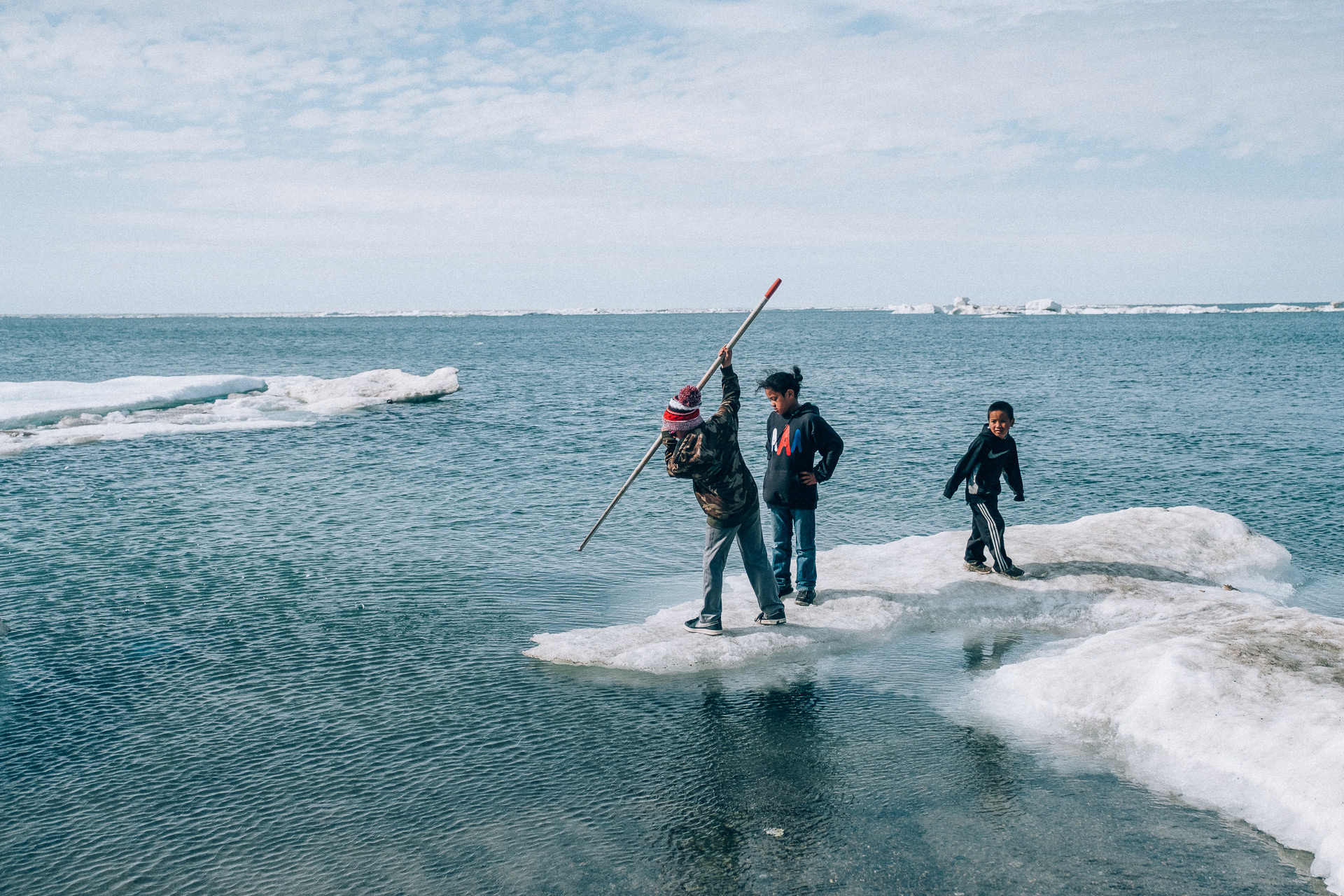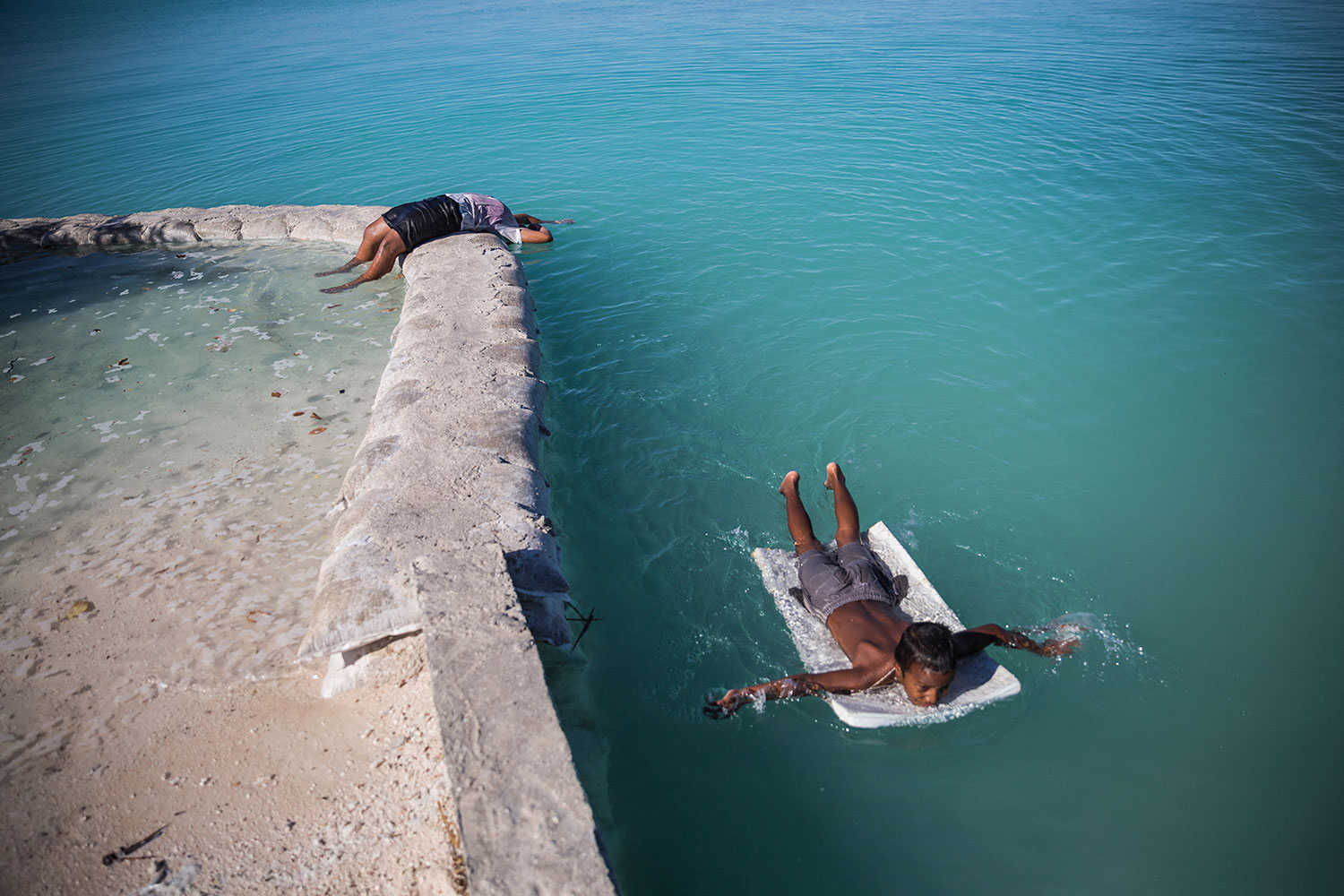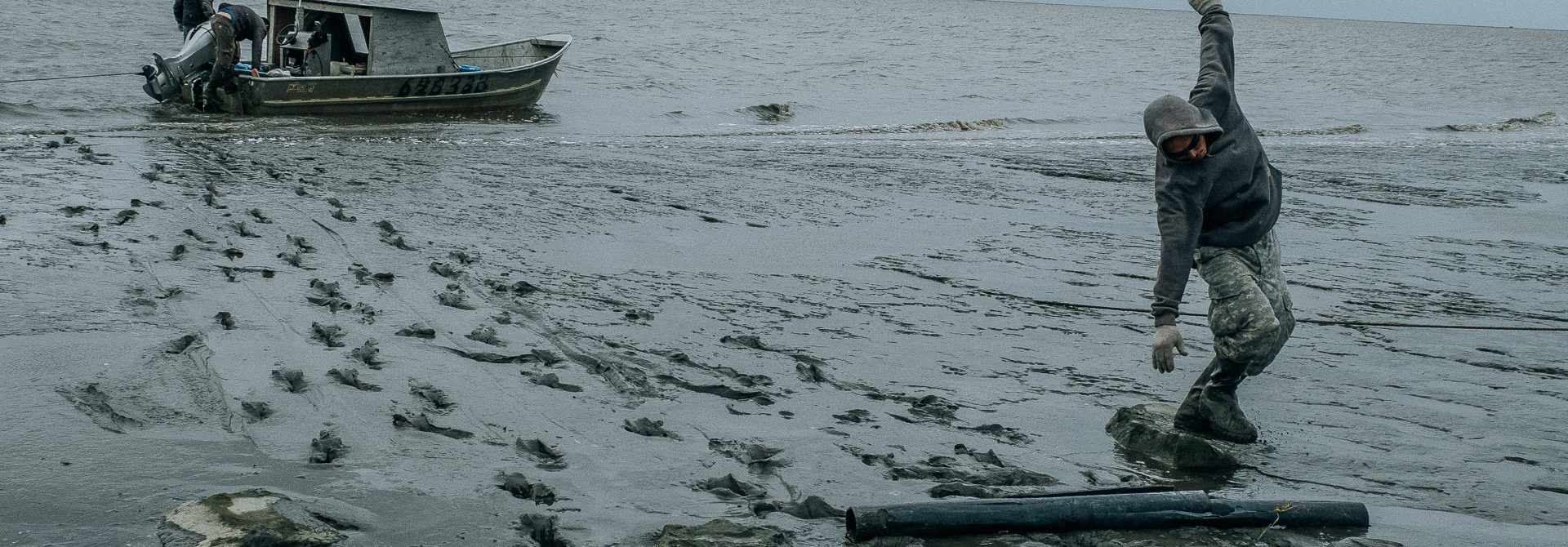
Alaska Diaries: Climate Migrants
I went to Newtok from the town of Bethel. Like almost everywhere in Northern Alaska, access there is possible by plane only. Three airlines fly to Newtok, making between five and seven flights daily. About 400 people live in the village, almost all of them have relatives in the neighboring villages, where you could also get mainly by air. The state authorities subsidize many flights, the planes usually arrive and depart on time, weather allowing. I have been lucky so far: despite the always changing weather conditions, none of my flights were delayed.
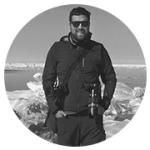
Born in Russia, lives in Portugal. Specializes in documentary photography, works for Panos Pictures. Works with the UN, Amnesty International, Oxfam, ChildFund, and UNICEF. Sokhin’s photographs have been published in The Guardian, National Geographic, GEO, International Herald Tribune, The Atlantic, The Global Mail, Internazionale, Stern, Le Monde, Paris Match, Marie Claire, BBC, Sydney Morning Herald, and in “The Russian Reporter” and “Around the World.” Published a photobook called Crying Meri about violence against women in Papua New Guinea.
From above, I could see that the village is located in the swampy area between the two rivers. The water in the rivers, bogs, and puddles around the houses was shining, reflecting the sunlight. During landing, I could have a closer look at the bank of Ninglick River destroyed by coastal erosion. Later, riding a small boat around Newtok, I took a picture of the village from the river side. Because of high water and waves the settlement looked like an island.
It immediately made me think of Fakaofo Atoll in Tokelau, South Pacific, where I worked in March this year. The only way to get to Tokelau is on a boat from neighboring Samoa, as the country has no airports. After a day spent in endless ocean waters, we finally saw a tiny island with the area of three square kilometres. Fakaofo looked like a fortress in the middle of the ocean: you could only see houses and concrete seawall, protecting this tiny piece of land from the storm surges. It is highly likely that Newtok will also at some point become an island, before being wiped off the Alaskan map.
In Newtok, they accommodate me in a local school. From the high porch I get an outlook on the village. The paths leading to houses on piles are covered in wood flooring. If you step off the path, your foot immediately sinks in unsteady swampy soil. Like in the other areas of northern and central Alaska, the thawing of permafrost impacts the everyday life of the indigenous population.
There are no trees in Newtok, there never used to be a permanent settlement here. Like in Kivalina, the locals, Yup’ik people, were almost compulsory resettled here after the school was built. But unlike people in the Iñupiat settlements, most natives in this part of Alaska speak their own language, using English for communication with the guests and in official documents. Today Newtok, like Kivalina, Shishmaref, and some other villages, are endangered because of global warming. According to the US General Accounting Office, out of 213 Alaskan villages, 184 are in danger of sinking and coastal erosion, and 20 of those need to be resettled immediately. However, relocating each of the villages costs hundreds of millions of dollars. Newtok is the first village in Alaska where the citizens decided to fully relocate their settlement to a different location.
The coastal erosion that endangered the village and its people has been destroying large areas of land each year. Right behind the school, on the side of Ninglick River, there are several houses and a road leading to them, that used to stretch several kilometers into the tundra. There the was a dump site, and several kilometers further from it was the mouth of the river. Now the road ends in several dozen meters from the last house. Movable plates used to build roads in areas with unstable ground were taken off 20 meters before the cliff. A strip of a black tough rubber material used for the road lining runs from under the plates and gets lost in the river. You can’t see the end of it even during low tide.
Locals Roderick and Jonny took me to see the eroded river bank, and warned me not to stand too close to the cliff — the soil can collapse anytime. Roderick said they used to take this road to get to the garbage dump, but now everyone is dumping human waste into the river. There is no plumbing in the village houses. All the locals use buckets as toilets, sweetly nicknamed ‘honey buckets’. Every day, hundreds of people throw this ‘honey’ right into the water.
Coastal erosion is typical for coastal areas. The changes in the banks terrain of rivers and seas happens due to many factors: heavy rain, winds, or meltwater. Global warming and the subsequent thawing of permafrost, as well as the disappearing of sea ice and global rise in sea level have sped up this process. The locals say that they lose up to 30 meters of coast annually.
The nearest house to the coast is owned by Nathan Tom and his son Tyson. Nathan is a hunter, he has about ten different shotguns that he uses to hunt different animals. He invites me into his place, and shows how his semi-automatic rifle works.
— Soon the water will come so close to my house that I’ll be able to shoot seals right from my window if they turn up, — he jokes.
Nathan says that every year the villagers put in pegs into the ground several dozen meters from the cliff. Almost every year the pegs collapse into the ground due to erosion. This year the peg was hammered in Nathan’s backyard:
— A couple years from now, I will have to leave this house. It’s good that our village has already started relocating to a new place where we won’t have these problems.
The place where the villagers started relocating is called Mertarvik, which translates from Yup’ik language as ‘a place to pack water’. Mertarvik is located on the large Nelson Island, access to which is possible only by boat. I asked a local carpenter Pauly Andy if I could join him on one of the trips to the new site. Pauly goes there almost every day to work on the construction of the new houses.
Trying to get into the boat, I regretted that I didn’t have rubber boots on me — the tide was very low, and I had to get to the boat through the mud, where I got stuck several times. Pauly’s children and nephews joined me on that trip to Mertarvik. A strong wind was blowing, the boat was going slowly, jumping up and down in the waves. I was sitting inside the booth that protected passengers from the wind and watched Pauly’s children huddling and hiding blue-eyed Husky puppies in their bosoms. I couldn’t help but think that this is what the first climate migrants looked like.
There are currently seven houses in Mertarvik, and only three of them are inhabited. Three other houses are standing too close to the water; the locals are using them as summer houses where they can take rest after hunting and picking berries. The seventh house is still being constructed.
The main part of Mertarvik is on the highland, away from the water. It is surrounded by endless tundra, covered in blackberry, blueberry, and salmonberry. In addition to the houses, there were built a few warehouses, several roads, barge landing place, and the foundation of the evacuation center.
In Mertarvik, I meet Aaron Cook, architecture researcher at Cold Climate Housing Research Center in Fairbanks. Aaron has been coming to Newtok for the past eight years, and according to him, he has observed the loss of the land as large as three football fields. This year Aaron and the local carpenters are finishing to build the first house designed by the Research Center.
— When I was studying to be an architect, — Aaron says, — our teachers used to say that if you are building a house for the cold conditions where the ground is frozen, you need to keep it frozen. If the ground is warm – keep it warm. We can’t do it anymore with climate change. Our Center had to adapt to the new reality and design housing that would last long and survive in the environmental challenges posed by climate change. The house that we are building in Mertarvik is first of it’s type here. We placed it on a metal frame that could be easily adjusted if the soil sinks or moves.
The house is standing on large metal skis, and as soon as it is completed, the family who will live there will choose where to move it. The house itself is entirely autonomous. It can be connected to central water or electricity supply, but it also works from three other sources of energy — a diesel generator, solar panels, and wind generator. This allows the future inhabitants to have electricity at any time of the day and in any weather.
I was invited into one of the houses where 80-year-old Moses and his wife Maria live. Their many grandchildren and great-grandchildren were running around from room to room and then try to pour water into a portable pool that they had set up in the kitchen. It is summer, but due to the cold weather, the house has to be heated by a small stove. Maria cooks caribou soup on it. She says that this house is much bigger than the one they used to have in Newtok, and after she and her husband moved here in 2012 they rarely leave Mertarvik.
— The children bring us all the necessary things and food from the village, the grandchildren come to stay with us in the summer. We have mobile phone reception here. I rarely travel to Newtok, only to go to the church or if there is a funeral in the village.
Unlike the new house that is being built by the Cold Climate Housing Research Center, the house of Moses and Maria has no solar panels or wind generator. Water is carried in buckets, the bathroom serves as a storeroom, laundry is hand washed in a basin, and a ‘honey bucket’ is used as a toilet. The diesel generator is rarely on, only when the couple wants to watch TV. The next day after my visit, Maria and Moses came to Newtok for the first time in three months, to attend a funeral.
I was invited to the funeral, too. According to Yup’ik traditions, a body of a deceased person stays in the house for three days. During this time, the relatives invite everybody to eat food in the house of the deceased, as it’s believed that it would be easier for a soul to go to heaven, if people are fed in his honor.
I had a chance to taste walrus soup and smoked salmon dipped into a liquified seal fat. I’ve also discovered that Yup’ik language has adopted many Russian words. These words were heard from the cossack traders in the times when Alaska was a Russian territory. Since then, all white people here are called ‘casakh’. After two centuries, some words became unrecognizable, but some can still be easily recognized by a Russian speaker. The words like ‘headscarf’, ‘flour’, ‘sugar’, ‘boots’, ‘spoon’, ‘keys’ are still sound very much similar to their Russian versions.
On the fourth day, the coffin was taken to a local Catholic church, where after a requiem mass it was loaded on a boat. Newtok cemetery is on the other side of Kealavik River, which washes the village from the west. On the other side of it there were an old village site, which later was abandoned. Now this swampy area accommodates a cemetery and a garbage dump.
Several boats took people to the other side of the river. Men carefully unloaded the coffin and carried it through the swamp to the newly dug grave. The grave, dug with jackhammers a day before, was partly filled with the ground water. The coffin was placed inside another box and packed in tarpaulin. After the funeral, people went to a school gym to attend the wake. After dinner a local band was called, and many elderly people were dancing.
Climate scientists say that Newtok has 10 to 15 years left until it will become unlivable. In a few years, the first houses would most probably start collapsing, then coastal erosion will get to the school. Alaska authorities are already trying to allocate $62.6 million to relocate 62 families to Mertarvik. This money would cover the relocation of the families only. Huge amounts would need to be spent on building a new school, an airport, a water tower, and a power plant.
Many Alaskan native communities are closely monitoring the situation in Newtok, looking at its residents as pioneers. Many of the Eskimo leaders asking a question: will it be possible to procure the budget necessary to relocate their village to a safer place?
The rest of the world is also observing Newtok with curiosity. Will the U.S. authorities spend hundreds of millions of dollars to relocate or fortify all the villages endangered by global warming? Will one of the richest countries in the world be able to solve this problem? We will have the answers to these questions in the nearest decades.
Text and photos: Vlad Sokhin / Panos Pictures
